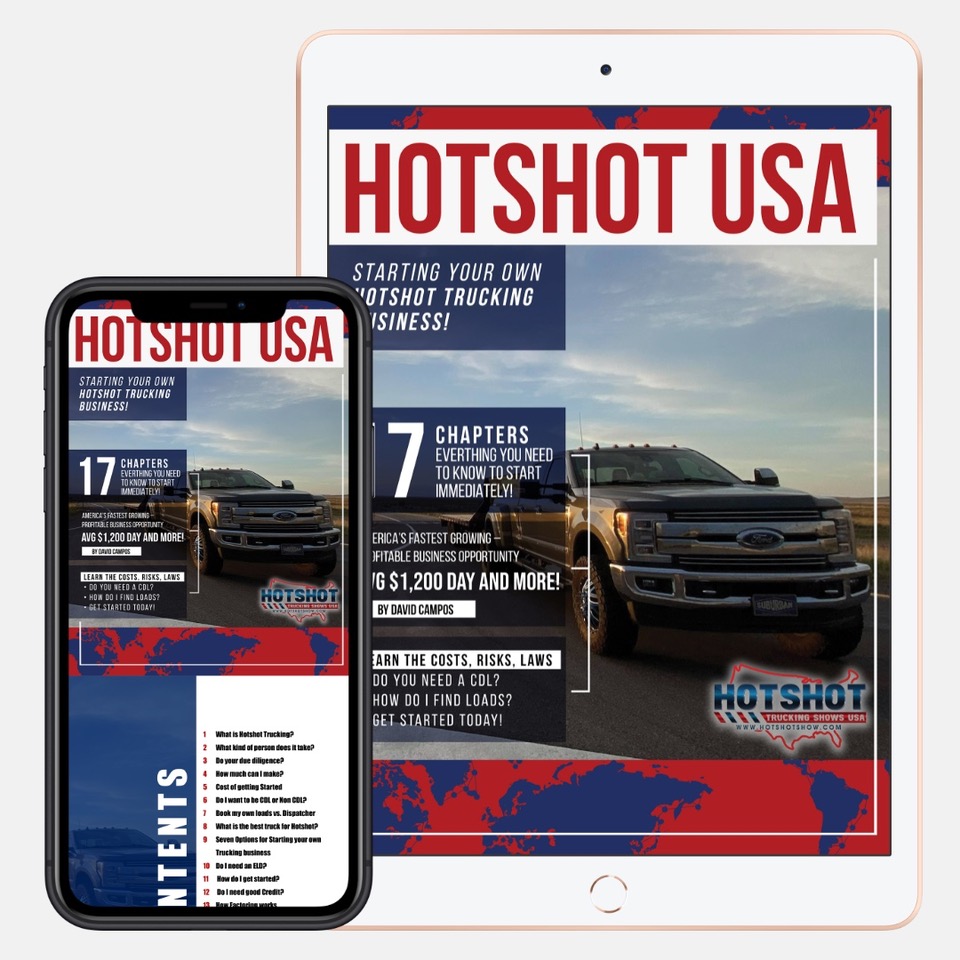Are you wondering about pricing your freight? Your minimum freight price should be .08 cents per ft. of deck space. This should be you bare minimum rate per mile.
• 10ft is 80 cents per mile
• 20ft is $1.60 per mile
• 30 ft is $2.40 per mile
• 40ft is $3.20 per mile
Pricing your freight for small heavy pieces
When pricing your freight for small heavy pieces, you take your length rate per mile and divide it by your weight in 1000 lbs. increments. For example, your weight cap is 10k lbs. on a 30ft. trailer. With the 1000 lbs. method: $2.40 per mile for full trailer – divided by 10 for 10,000 lbs. load capacity = .24 cents per 1000 lbs. per mile. You would charge by the ft. or by the weight per 1000 lbs…. whichever is more.
Example:
10ft load weight is 7k lbs.
By the length it’s. 80 cents per mile
By the weight it’s $1.68 per mile
So you should charge $1.68 mile as a minimum.
Or if it’s 10 ft. 1000 lbs.
That’s .80 cents per mile by the ft.
That’s .24 cents per mile by the weight
So you would charge by the ft. at .80 cents per mile for that piece
Regardless if you have another piece that can go with it or not or if you’re in a bad area and just need to get something to move. Find the price difference between the two different rate calculations and price it in the middle of the difference.
Using above example:
10 ft. 7k lbs. load
By the ft. is .80 cents
By the weight is $1.68
.88 cents is the difference between the two
Cut the difference in half, .88 cents in half = 44 cents, then add that to the lowest of the two methods.
So, .80 cents per mile plus the difference cut in half (.44 cents in this example) = 1.24 per mile.
That’s what we in the business call a gas money load when pricing freight. If it’s too low of a rate, I prefer to drive out empty. Don’t give a discount to one customer because of your expected business with another. This is a guide to help others, if we share this information and build from it, we can possibly change these bad rates around. This won’t happen overnight obviously, but it will send a clear message.
If this article helps you give us a follow
– Mark Thurber “We Take Freight, LLC”
READ MORE FROM OUR HOTSHOT-USA RESOURCE BLOG
PURCHASE OUR HOTSHOT-USA E-BOOK “GUIDE TO GETTING STARTED IN THE BUSINESS”















This way of thinking is part of the problem in Hot Shot today. It’s NOT always on the length or the weight. The question should be is, is it LTL or TL freight? I see several examples here that are barely going to cover operating costs, if it does that. If a customer calls us with a load that is 10′ long, weighs 7k lbs, and has a time frame, or wants a dedicated truck. I sure as hell am not charging $1.68 or starting there when the rate is 3Xs(or more) that for the rig. Nothing was covered also for DH to get that freight. There is MUCH more to pricing then this if you want to stay in it for the long term.
Food for thought with this math. Right now, ALL of us are incurring a fuel cost per mile of $.48-$.55 alone. That is apprx 33% of the gross revenue by this formula, another 27-30% for taxes. It isn’t rocket science to figure there is little to nothing left for maint. funds, let a lone profit. A big point not covered here on pricing your freight. This is the type of math mega carriers use. Working on quantity, not quality. Doubt there are any hot shots that are “megas”
When looking for advice, or reading topics like this, consider the time the party has had in the business. Research it well, don’t just take their word as many have no issue telling stories to inflate their credibility.
Anyone that knows me, knows I’ve been at this a long while under my own authority and have done very well. For those that are serious in this business, I have gladly shared the what to and what not to in being successful.
Thanks Paul Rigsby, I always appreciate your responses and articles. Been waiting on your to write a few more. As you see in my reply, I was just giving someone else’s view.
Thank you Mark Thurber for your guest article. This article demonstrates that we like to give different points of views. Some would agree and some would disagree, that seems to be the norm in every case or question. As for me, my belief is that in the heat of the battle to get loads off of load boards, you have to stay in the range of what the broker or shipper is offering. You can ask for more and state your case but since you are racing against the clock and a highly competitive nature, you won’t have a lot of time to be figuring a lot of measurements and rates. Most of us in this business already know what we need to make a profit, and what is acceptable to us. By limiting yourself with calculations, you could be shooting yourself in the foot. I often take loads that are far above the going rate but it usually involves different factors, such as expediated loads, tarping, multiple stops, and good service. There are so many different other factors such as CPM and fuel prices that factor in as well.
Now if you are trying to figure out a price for a direct customer, than you might use this calculation. I think the biggest flaw with this type of rate scheme is using how many feet you are using is for lack of other words, crazy. You have to look at every load as if it is full load, whole truck, total deck, 40 ft load, nothing less. Chances are you are going to only be taking this load and the shipper is paying for the whole load. Your scheme implies that they are only using a partial deck, and I would say that the majority of my loads are confirmed as 40 ft., empty trailer loads. The days of multiple partial loads are rare and far between.
I know I have seen a lot of comments and received messages telling me that this method is wrong. What is right for you may not be right for me. My good friend and guest moderator Paul Rigsby has a lot to say about all of this and let me reiterate, the views and articles are not necessarily the views of David DC Campos or Hotshot-USA. We are just giving everyone a voice.
[email protected]